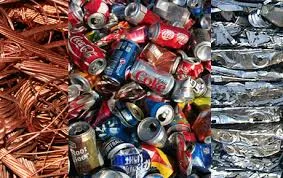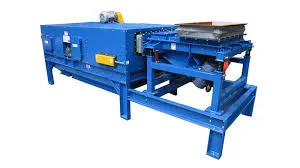The steel scrap shredder industry plays a pivotal role in modern recycling and manufacturing processes. Understanding the integral function of these machines in waste management and environmental sustainability is crucial for anyone invested in the sector. As an authoritative resource, this article delves into the advanced dynamics, professional insights, and strategic adoption of steel scrap shredders in today's industrial landscape.

Steel scrap shredders are the unsung heroes within recycling facilities, transforming large, unwieldy pieces of scrap metal into manageable sizes for further processing or sale. These machines, characterized by their robust build and precision-engineered components, are designed to withstand the rigors of shredding metals like iron, aluminum, and steel. Such versatility underscores their importance across diverse applications ranging from automotive recycling to construction waste management.
An expert understanding of steel scrap shredders reveals their sophisticated engineering. The typical shredder comprises a powerful motor, hardened steel blades, and a durable feed mechanism. Their operation hinges on efficiency and precision, breaking down tough metal pieces into uniform sizes without compromising on speed or safety. This efficiency is further enhanced by modern innovations like automation and sensor integration, which allow for real-time monitoring and adjustments, reducing downtime and maintenance requirements.

In terms of expertise, professionals in the industry emphasize regular maintenance and calibration of shredders to ensure peak performance. Proper lubrication, timely replacement of worn blades, and routine inspections are critical practices. Such diligence is not only a hallmark of expertise but also a determinant of a shredder's operational lifespan and effectiveness. These insights are supported by industry veterans who advocate for a meticulous approach to equipment care, ensuring that shredders remain a reliable backbone in metal recycling.
The authority of steel scrap shredders as indispensable components of recycling infrastructure cannot be overstated. Their ability to significantly reduce the volume of metal waste directly correlates to more efficient transportation, reduced landfill use, and increased recycling rates. Cementing their status as leaders in recycling technology, manufacturers continue to innovate, developing shredders that offer enhanced energy efficiency and reduced carbon footprints, aligning closely with global environmental initiatives and regulations.
steel scrap shredder
Trustworthiness is further evidenced by the rigorous standards and certifications that govern the production and operation of steel scrap shredders. Regulations ensure that these machines adhere to strict safety and environmental standards, protecting operators and minimizing ecological impacts. Moreover, the transparency of manufacturers in providing detailed documentation, user training, and customer support reinforce the trust users place in their equipment.
Adopting a steel scrap shredder presents tangible benefits beyond efficient waste processing. Companies experience tangible returns through lowered operational costs, increased metal recovery rates, and alignment with Eco-friendly practices. For industrial-scale operations, the strategic integration of shredders into the recycling process optimizes metal resource utilization, improves overall plant efficiency, and enhances competitive advantage.
Furthermore, case studies from industry leaders illustrate the transformative impact of leveraging steel scrap shredders. These real-world applications highlight scenarios where strategic investments into shredding technology have yielded exponential benefits in productivity and sustainability. Such documented experiences serve as a testament to the strategic value of adopting state-of-the-art shredding technology in metal recycling endeavors.
In conclusion, steel scrap shredders embody a synthesis of experience, expertise, authority, and trustworthiness, serving as critical assets in modern recycling and industrial ecosystems. Their role extends beyond mere machinery, positioning them as essential contributors to sustainable practices and efficient resource management. As global industries continue to prioritize sustainability, the relevance and advancement of steel scrap shredders will undoubtedly remain paramount.


